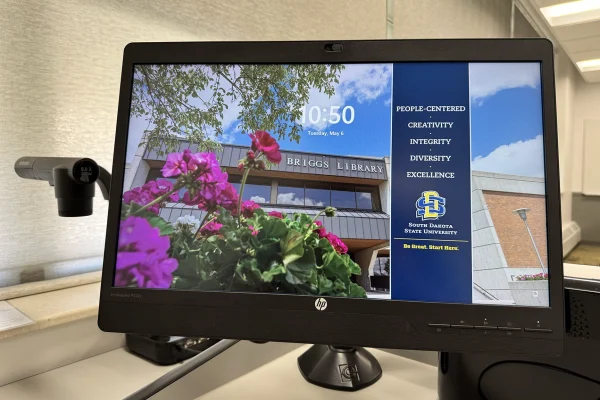Board of Regents raises S.D. tuition 5.5 percent
March 24, 2004
Toby Uecker
Students at South Dakota’s six state institutions will be paying more for their education this fall following a Board of Regents decision last week to raise tuition 5.5 percent.
According to documents the Regents discussed at their Thursday meeting on the SDSU campus, the average undergraduate student will end up paying around $250 more in tuition over the course of a year.
Current yearly in-state tuition runs a few cents under $4,536. The increase would take that to $4,785.
Outgoing Students’ Association President Eric Erickson explained that the increase in tuition is needed primarily to adjust finances with the inflation rate.
Without the increase, he said, SDSU might not be able to offer competitive teacher salaries or some student programs.
“I like keeping tuition low,” Erickson said, “but we have to make sure we have enough resources for the institution.”
Regent Tony Venhuizen, an SDSU junior, said compared to other states, South Dakota’s tuition increase is modest.
He said many other systems in the region are facing tuition hikes of 10 percent or more.
In some states, the increase is as high as 40 percent.
“I think that if the students look around at other states, … everybody else is in double digits,” Venhuizen said. “The fact that South Dakota can stay under six percent is fiscally responsible and reasonable.”
In addition to the tuition hike, Regents agreed to a student activity fee raise. A combination of multiple initiatives, the overall hike is estimated to put an additional $16 on students’ bills over the next three years.
The general activity fee increase, like part of the tuition hike, will help augment teacher salaries. Additionally the fee increase is designed to bring the state system in full compliance with Title IX requirements for funding balance between men’s and women’s sports.
Erickson said he has been fielding questions since the announcement about the fee’s connection to SDSU’s Division I move, but he assures students that the two are not related.
While the increases have generated discussion on the SDSU campus, some say that the change won’t make a huge difference to them financially.
Amy Austgen, a junior history major from Granite Falls, Minn., said even with the tuition increase, her bill at SDSU won’t be much different that what she’d pay in her home state.
“It’s actually pretty comparable, I think,” she said.
“I didn’t think it was a big deal at all,” said Jane Tschetter, a freshman business economics major from Brookings. “If $250 ensures that we keep our best professors on campus, then it’s worth it.”





















